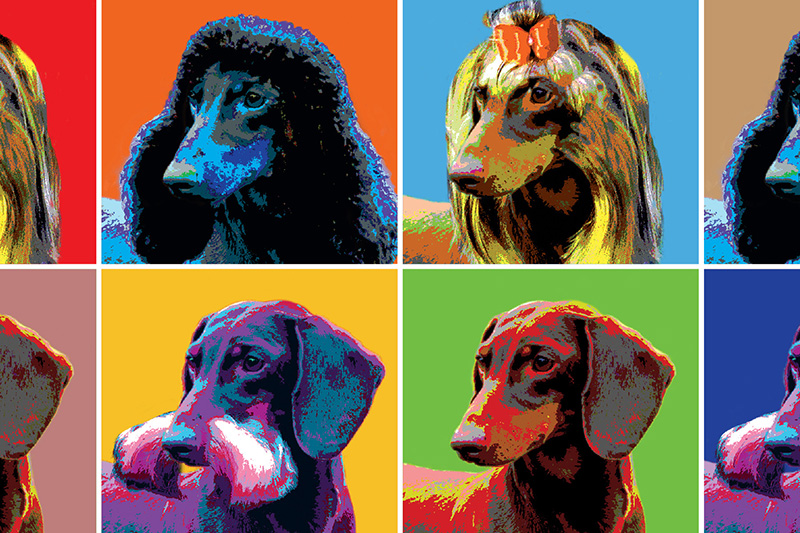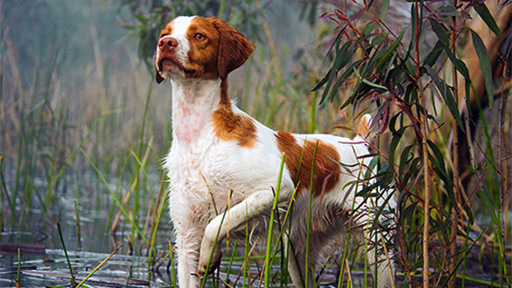Researchers create the largest global catalog of variations in the dog genome
In 2019, 'King' the Wire Fox Terrier won the Westminster Dog Show in Madison Square Garden, having competed against 2,800 dogs from 203 breeds. The sheer number of dog breeds points toward the major role played by genetics in shaping such variation in dogs.
The Power of Comparison
In a new study, researchers at the National Human Genome Research Institute (NHGRI) have generated the largest catalog of genetic variants associated with physical traits for domesticated dog breeds. The findings, published in Nature Communication, will help researchers assess if variants associated with dog body structure, behavior and life span could also be implicated in related human diseases.
"This study included data from more than 722 dogs and 144 modern breeds," says Dr. Ostrander, NIH Distinguished Investigator and senior author of the paper. "Through the results, we've learned some of the fascinating genetics behind the variability observed in the world's 450 dog breeds."

After humans initially selected for specific traits during dog breeding centuries ago, dogs have since formed traits and characteristics spontaneously over time. Jocelyn Plassais, a postdoctoral researcher in Dr. Ostrander's laboratory and lead author of the study explained that dogs naturally develop disorders that are common to humans, such as various forms cancers, infections and even diabetes. In addition, a vast number of regions within the dog genome remain similar to the human genome. Thus, dog genomes can provide insight into the biological mechanisms of human health and disease.
The researchers used whole genome sequencing and genome-wide association studies to identify genomic variants associated with sixteen observable characteristics. Most of the blood samples from dogs were taken via The Dog Genome Project, a citizen science initiative that relies on donations from motivated dog owners.
In particular, the study found that the LCORL gene is associated with dog body weight and height. LCORL is known to be associated with skeletal size and adult height in humans, dogs and livestock, but this is the first instance where a LCORL mutation of biological relevance has been detected in an animal model. The researchers propose that specific variation in LCORL may account for body size difference in most, if not all mammals, based on combined available data from dogs, humans and livestock.
Dogs are loved by all because they are loyal, adorable, fun, and just so darn cute! But did you know that dogs can actually help improve human health? Watch what #NHGRI researchers are learning about these incredible species! #DogGenome #Genome #Health #Disease #CitizenScience pic.twitter.com/RTeXBwNukW
— National Human Genome Research Institute (@genome_gov) May 9, 2019
Many dog species are predisposed to developing bone-related disorders such as osteoporosis and osteosarcoma. So, the researchers compared dogs with very long legs (ex: Great Dane) to those with normal legs (ex. Golden Retriever). Their analysis revealed that the gene ESR1 is associated with long legs in dogs. In humans and cattle, ESR1 codes for the protein that the estrogen hormone binds to. Mutations in the gene are known to affect bone mineral density and increase the risk of bone-related conditions. Researchers have yet to detect the mutations in ESR1 that are associated with long-legged dogs. Each breed of domestic dogs arises from a few "founder" dogs, therefore reducing genetic variation within each breed. This fact may make it easier to find clinically relevant mutations in dogs than in humans, and eventually helping with clinical intervention in human patients.
Such canine clues are continuing to help researchers maintain an alliance between the two species by using the power of comparison to understand dog traits and human diseases. The catalog is Euro-American centric in its current form, but there are efforts in place to include data from all breeds, particularly from Asia and Africa. The database is available online, and researchers can input sequence data into the catalog directly.
Since 2015, Dr. Ostrander has led the international Dog10K genome project, in partnership with Dr. Yaping Zhang (Kunming Institute of Zoology) and Dr. Robert Wayne (University of California, Los Angeles). Their goal is to create a global effort and sequence 10,000 dogs and other canids such as wolves and coyotes that represent all continents within the next five years. She hopes that such an initiative increases inclusion of underrepresented breeds, and enhances the strength of the data itself. By creating such an international catalog, Dr. Ostrander believes finding dog variants, genes and pathways will reflect strongly on human health.
"The genes underlying the range of variation in dog breeds can teach us much about our own health," she says.
-
The Power of Comparison
In ...
The Power of Comparison
In a new study, researchers at the National Human Genome Research Institute (NHGRI) have generated the largest catalog of genetic variants associated with physical traits for domesticated dog breeds. The findings, published in Nature Communication, will help researchers assess if variants associated with dog body structure, behavior and life span could also be implicated in related human diseases.
"This study included data from more than 722 dogs and 144 modern breeds," says Dr. Ostrander, NIH Distinguished Investigator and senior author of the paper. "Through the results, we've learned some of the fascinating genetics behind the variability observed in the world's 450 dog breeds."

After humans initially selected for specific traits during dog breeding centuries ago, dogs have since formed traits and characteristics spontaneously over time. Jocelyn Plassais, a postdoctoral researcher in Dr. Ostrander's laboratory and lead author of the study explained that dogs naturally develop disorders that are common to humans, such as various forms cancers, infections and even diabetes. In addition, a vast number of regions within the dog genome remain similar to the human genome. Thus, dog genomes can provide insight into the biological mechanisms of human health and disease.
The researchers used whole genome sequencing and genome-wide association studies to identify genomic variants associated with sixteen observable characteristics. Most of the blood samples from dogs were taken via The Dog Genome Project, a citizen science initiative that relies on donations from motivated dog owners.
In particular, the study found that the LCORL gene is associated with dog body weight and height. LCORL is known to be associated with skeletal size and adult height in humans, dogs and livestock, but this is the first instance where a LCORL mutation of biological relevance has been detected in an animal model. The researchers propose that specific variation in LCORL may account for body size difference in most, if not all mammals, based on combined available data from dogs, humans and livestock.
Dogs are loved by all because they are loyal, adorable, fun, and just so darn cute! But did you know that dogs can actually help improve human health? Watch what #NHGRI researchers are learning about these incredible species! #DogGenome #Genome #Health #Disease #CitizenScience pic.twitter.com/RTeXBwNukW
— National Human Genome Research Institute (@genome_gov) May 9, 2019Many dog species are predisposed to developing bone-related disorders such as osteoporosis and osteosarcoma. So, the researchers compared dogs with very long legs (ex: Great Dane) to those with normal legs (ex. Golden Retriever). Their analysis revealed that the gene ESR1 is associated with long legs in dogs. In humans and cattle, ESR1 codes for the protein that the estrogen hormone binds to. Mutations in the gene are known to affect bone mineral density and increase the risk of bone-related conditions. Researchers have yet to detect the mutations in ESR1 that are associated with long-legged dogs. Each breed of domestic dogs arises from a few "founder" dogs, therefore reducing genetic variation within each breed. This fact may make it easier to find clinically relevant mutations in dogs than in humans, and eventually helping with clinical intervention in human patients.
Such canine clues are continuing to help researchers maintain an alliance between the two species by using the power of comparison to understand dog traits and human diseases. The catalog is Euro-American centric in its current form, but there are efforts in place to include data from all breeds, particularly from Asia and Africa. The database is available online, and researchers can input sequence data into the catalog directly.
Since 2015, Dr. Ostrander has led the international Dog10K genome project, in partnership with Dr. Yaping Zhang (Kunming Institute of Zoology) and Dr. Robert Wayne (University of California, Los Angeles). Their goal is to create a global effort and sequence 10,000 dogs and other canids such as wolves and coyotes that represent all continents within the next five years. She hopes that such an initiative increases inclusion of underrepresented breeds, and enhances the strength of the data itself. By creating such an international catalog, Dr. Ostrander believes finding dog variants, genes and pathways will reflect strongly on human health.
"The genes underlying the range of variation in dog breeds can teach us much about our own health," she says.
Related Content
Last updated: April 2, 2019



